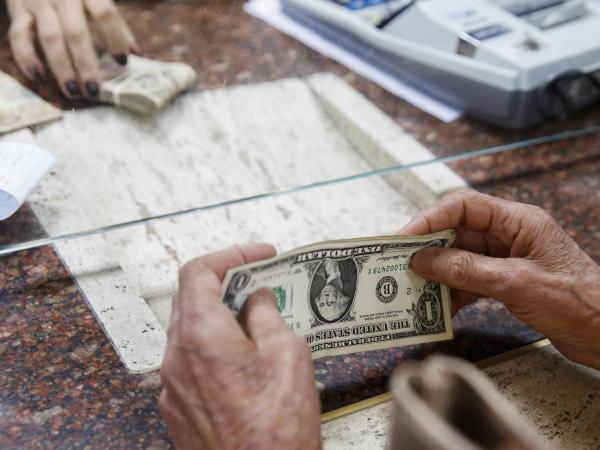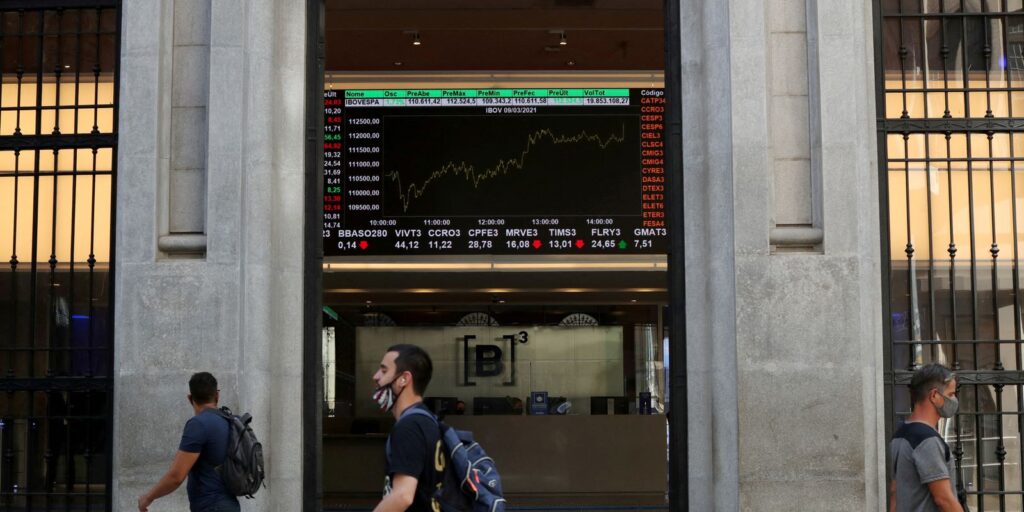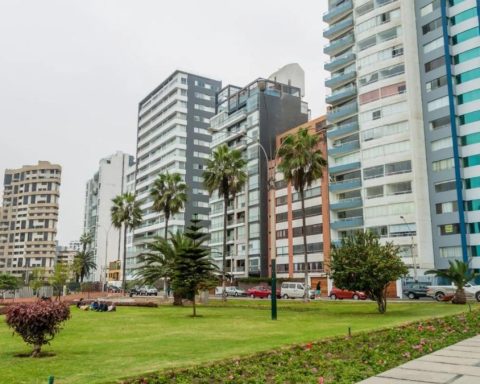The US dollar has experienced an unusual revaluation in recent weeks that has caused several Latin American currencies to devalue, with the inevitable consequences that this entails for the public coffers and the domestic economies of the countries of the region.
(Dollar in Colombia: how much are they selling it for in exchange houses?).
A large part of the products that make up the family basket in Latin America are imported and paid for in dollars, as well as resources as important as hydrocarbons and raw materials.
A POST-PANDEMIC BAD
“After a pandemic in which the economy was stimulated, comes a great phenomenon called inflation. When central banks start raising interest rates and they start to see a possible recession, you have to stop growth”explains the financial analyst Andrés Moreno.
“There was an overwhelming growth in the world, everything recovered faster than expected. With better interest rates and a possible recession, international capital is more risk averse and prefers to go to more solid economies. This means that the currencies of emerging countries are devalued”, add.
Another important factor in the depreciation of currencies against the dollar is the constant increases in interest rates by the US Federal Reserve (Fed), the last one on June 16 to 1.50%.
DOLLAR: ANOTHER PAIN FOR ARGENTINA
In Argentina, the strengthening of the dollar adds to the macroeconomic imbalances that the country is dragging along and enhances the weakness of the peso itself, as a result of an inflation of 64% year-on-year, the shortage of international currencies, devaluation expectations, the fiscal deficit and the political uncertainty.
“The dollar thing is going to be mounted on a problem that Argentina had before”, said the economist of the consulting firm Ledesma Gabriel Caamaño, who warns that it is already being debated that inflation could reach three digits.
(Dollar: concern about its impact on the country continues).
Argentina applies strong exchange controls to authorize the entry and exit of dollars at the official exchange rate, which is why parallel exchange rates proliferate in the stock market and the black market.
The expectations of devaluation and the weakness that the Argentine peso is dragging are reflected in a gap of more than 147% between the official exchange rate and the “blue” or parallel rate, which this week was quoted at 338 pesos.
A STRONG INTERVENTION IN CHILE
The alarms in Chile jumped on July 14, when the dollar reached the historical maximum of 1,051 pesos.
This vertiginous escalation precipitated that same day a historic intervention in the foreign exchange market by the Central Bank for an amount of 25,000 million dollars until September.
The intervention is being “successful”since it has achieved in just four days the decline of the dollar below 1,000 pesos, according to experts.
“Before the currency intervention, the peso was among the most undervalued currencies in the world, despite the fact that Chile has relatively stable and healthy economic fundamentals. The appreciation of the dollar had reached 20%, but thanks to the intervention it has been reduced to 12%”explains Francisco Castañeda, from the Universidad Mayor.
COLOMBIA: A DOLLAR WITH POLITICAL INFLUENCE?
The dollar in Colombia reached a record price of 4,625 pesos on July 12, driven by global volatility due to fears that the United States will enter a recession that will become global.
The country will be governed as of August 7 by Gustavo Petro, but market analysts consider that the political situation has little influence on the behavior of the exchange rate, since the Colombian peso has accumulated a depreciation of 10.5% in the official price so far this year.
“Part of what is happening in Colombia and Chile is that they are countries highly exposed to raw materials: oil in the case of Colombia and copper in Chile, and both have had price reversals. That makes us have two currencies with high sensitivity in this environment”, says the main economist of BBVA Research, Alejandro Reyes.
So far, the Banco de la República’s policy of not intervening in the value of the dollar has proven to be correct and, after last week’s record, the dollar has entered an adjustment trend, with four sessions down, and the Last Thursday it closed at 4,410 pesos.
THE RESISTANT MEXICAN PESO
The Mexican peso closed at 20.51 per dollar on July 19, the same figure as on December 31, 2021, according to official data from the Bank of Mexico (Banxico). Janneth Quiroz, chief economist of the Monex group, emphasizes that in the first half of the year the Mexican peso maintained the levels of the end of 2021 with an appreciation of 0.1%, closing at 20.13 pesos per US bill on December 30. June.
A SOMETHING OPAQUE PERUVIAN SOL AGAINST THE DOLLAR
In Peru, In the first days of July, the dollar exchange rate experienced an increase of 3.8% on average, in the interbank price, towards the end of the period from July 1 to 12.. In those days they had to give 3.97 soles per dollar, unlike the 3.82 soles on average last June, according to figures from the Central Reserve Bank of Peru (BCRP).
THE DOLLAR BACKS DOWN IN BRAZIL
In Brazil, the US currency has suffered a carousel and, contrary to the rest of the region, it accumulates a decrease of just 2.43% from January to July 20.
However, since Maythe dollar has gradually strengthened in the Brazilian market, after having lost up to 15.35%although the impact of the rise in the greenback has not been as great as in some of the neighboring countries.
(Effects on ordinary citizens: what would rise due to the rise in the dollar).
According to Joelson Sampaio, a professor at the Getulio Vargas Foundation (FGV), the strengthening of the dollar must continue in Brazil and other emerging countries given “the expectation” of a greater increase in interest rates and inflation in the US. .
THE “DOLLARIZED”
In Ecuador, the appreciation of the dollar has generated concern due to the increase in the price of exports, and, although the measure benefits, on the other hand, imports, domestic sales depend on the purchasing power in a country in recurrent economic crisis.
“We are very concerned because we are experiencing moments that have not been seen in the last two decades,” with an appreciation of the dollar “as strong as the one that is happening”, states the president of the Ecuadorian Federation of Exports (Fedexpor), Felipe Ribadeneira.
The strengthening of the dollar implies that Ecuadorian exports lose competitiveness in destination countries, whose currencies are depreciating. Meanwhile, the revaluation of the dollar hardly affects Panama, and rather benefits, since it is a country of services and more an importer than an exporter.
Unlike Ecuador and El Salvador, Panama It has had the dollar since its foundation as an independent state after its separation from Colombia in 1903.
The high value of the dollar has not affected El Salvador’s exports, which in fact have continued to rise despite inflation.
According to the Central Reserve Bank, total exports between January and June 2022 totaled 3,256 million dollars, with 16.8% growth.
In addition, imports reached 8,934.4 million dollars, registering a 27.2% increase. And although bitcoin is legal tender since 2021, the economy is not “bitcoinized”.
Ricardo Castaneda, coordinator of the Central American Institute for Fiscal Studies (Icefi) for El Salvador and Honduras, says that the incidence or effect on the economy in general is minimal, due to the dollarization in force since 2001. However, this could affect groups such as exporters who do not ship their products to the US but to other countries, since their products will be less competitive.
IN CUBA THE PROBLEM IS THE EURO
In Cuba, the dollar has not had a significant rise, but the euro has registered a constant rise for a month, above the US currency.
Until last Tuesday, the European ticket was exchanged in the informal market for 124 Cuban pesos (cup). The official rate is 24.54 pesos.
The increase in the euro began in mid-June, coinciding with the entry into force of a directive from the Central Bank of Cuba (BCC) that prevents consulates from changing to other currencies the income from procedures invoiced in cup.
A few days later several consulates confirmed that they would charge in euros. Many Cubans travel to Central American countries to begin their journey to the United States.
On the other hand, the US dollar has also risen in the informal market during 2022, but at a lower rate than the euro.
At the beginning of 2021, the country launched a package of economic reforms known as the Ordering Task, which established an official exchange rate of 24 cupS per dollar. However, on the street the greenback was traded on Tuesday at 118.
A DOLLAR THAT HURTS THE SAME USA
The United States closed 2021 with a trade deficit of 27% and this trend could continue this year if the dollar remains strong against the euro.
Broadly speaking, with a weaker euro, European goods and services are more attractive to the United States, while domestic producers are much less competitive internationally.
This could affect national production in sectors such as machinery, vehicles or the chemical industry, major sectors in US exports to Europe.
“Europe today has a little more inflation, but it’s in a stronger position in terms of international competition. So it’s going to be a little easier to export and a little less attractive for them to import products from the US.” explains Professor of Financial Markets and Institutions at Brandeis International Business University, Carol Osler.
EFE

















